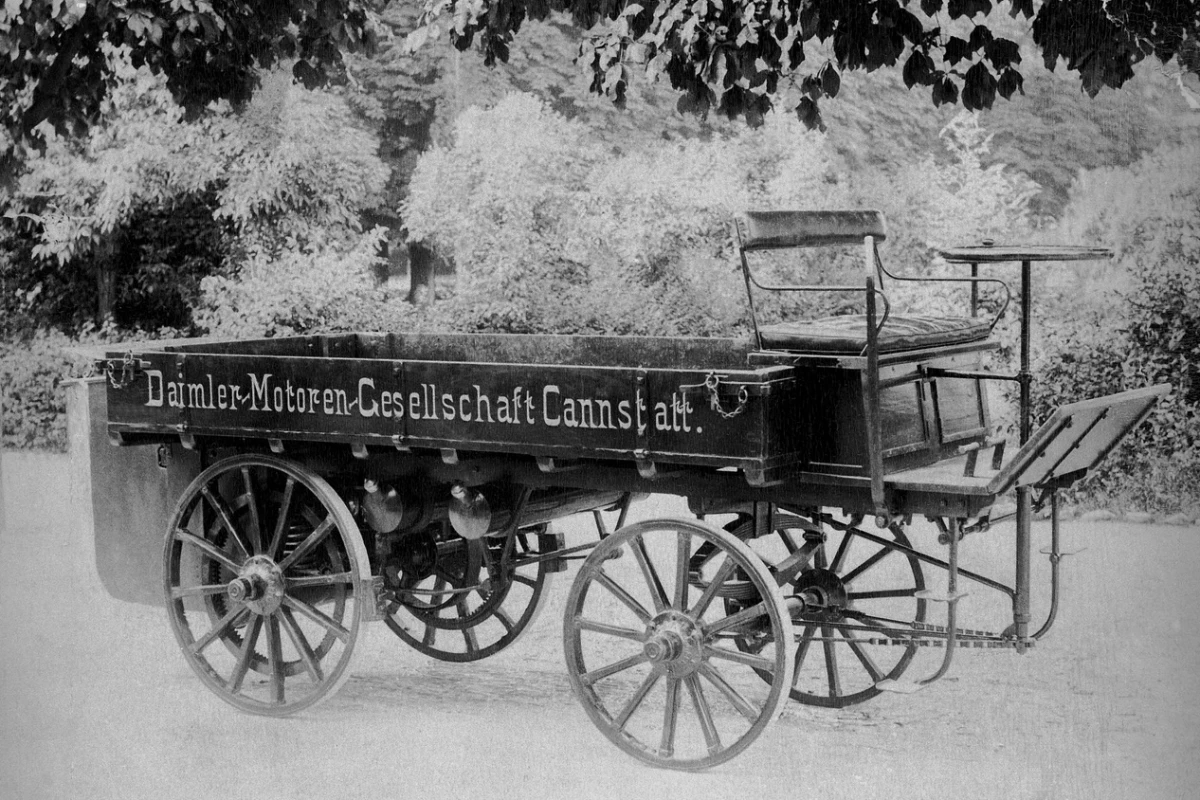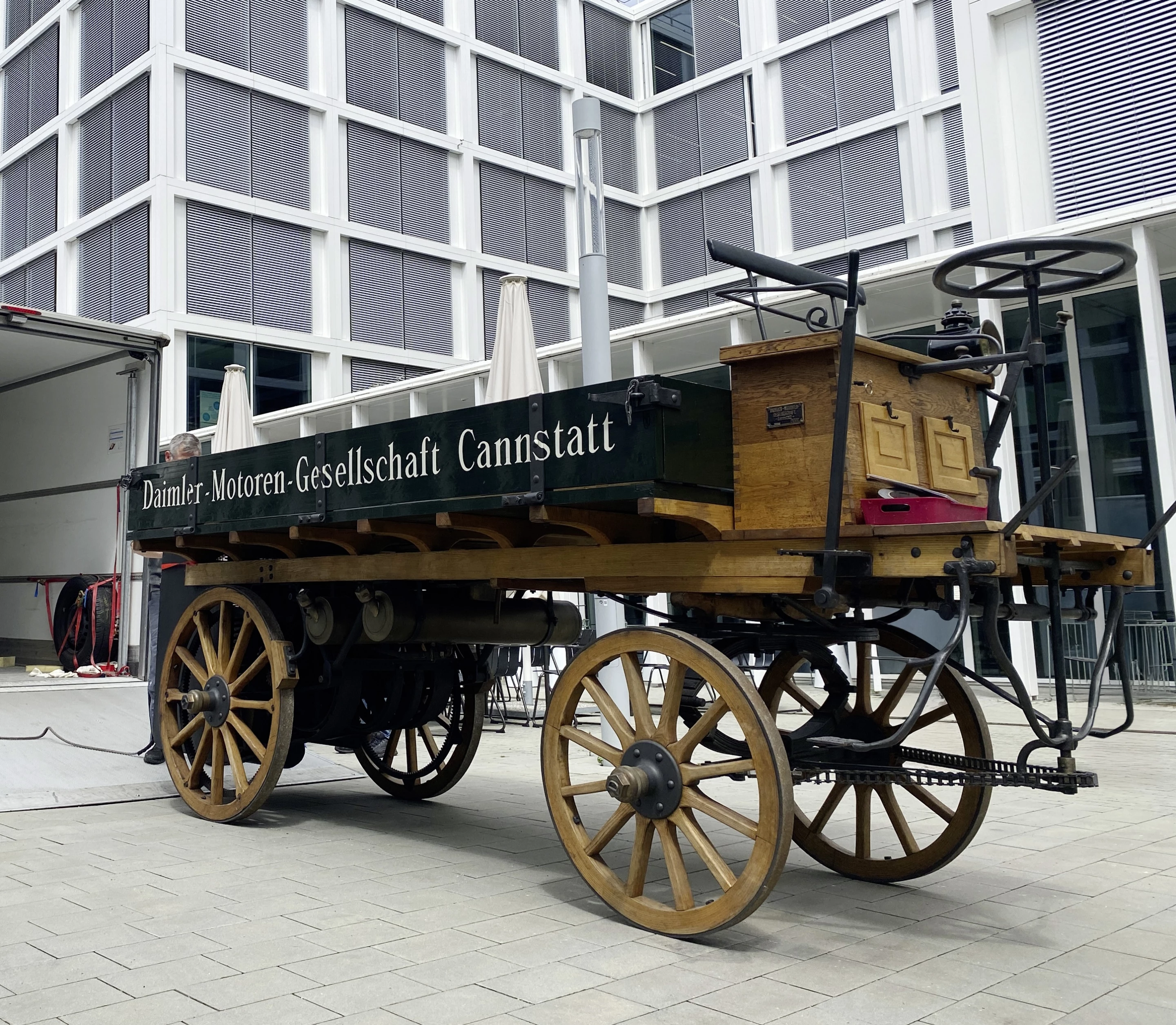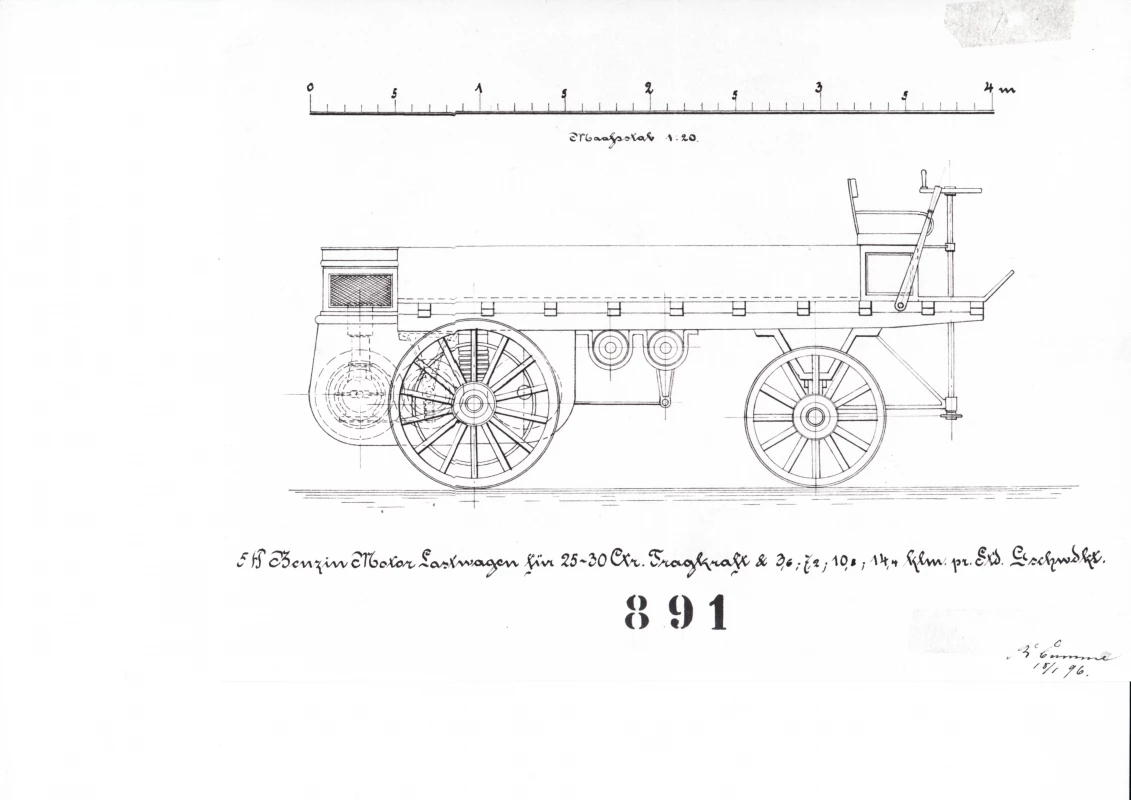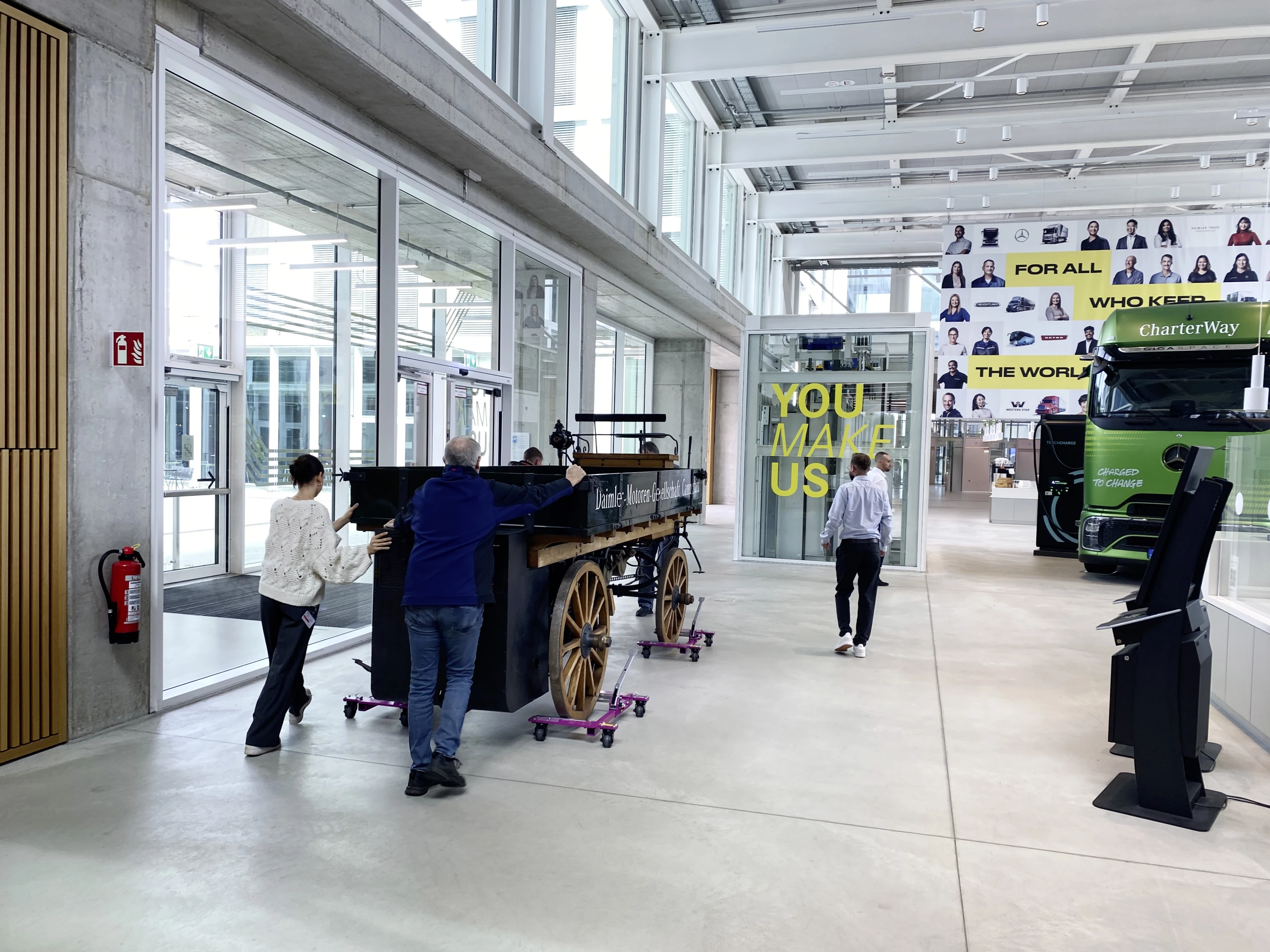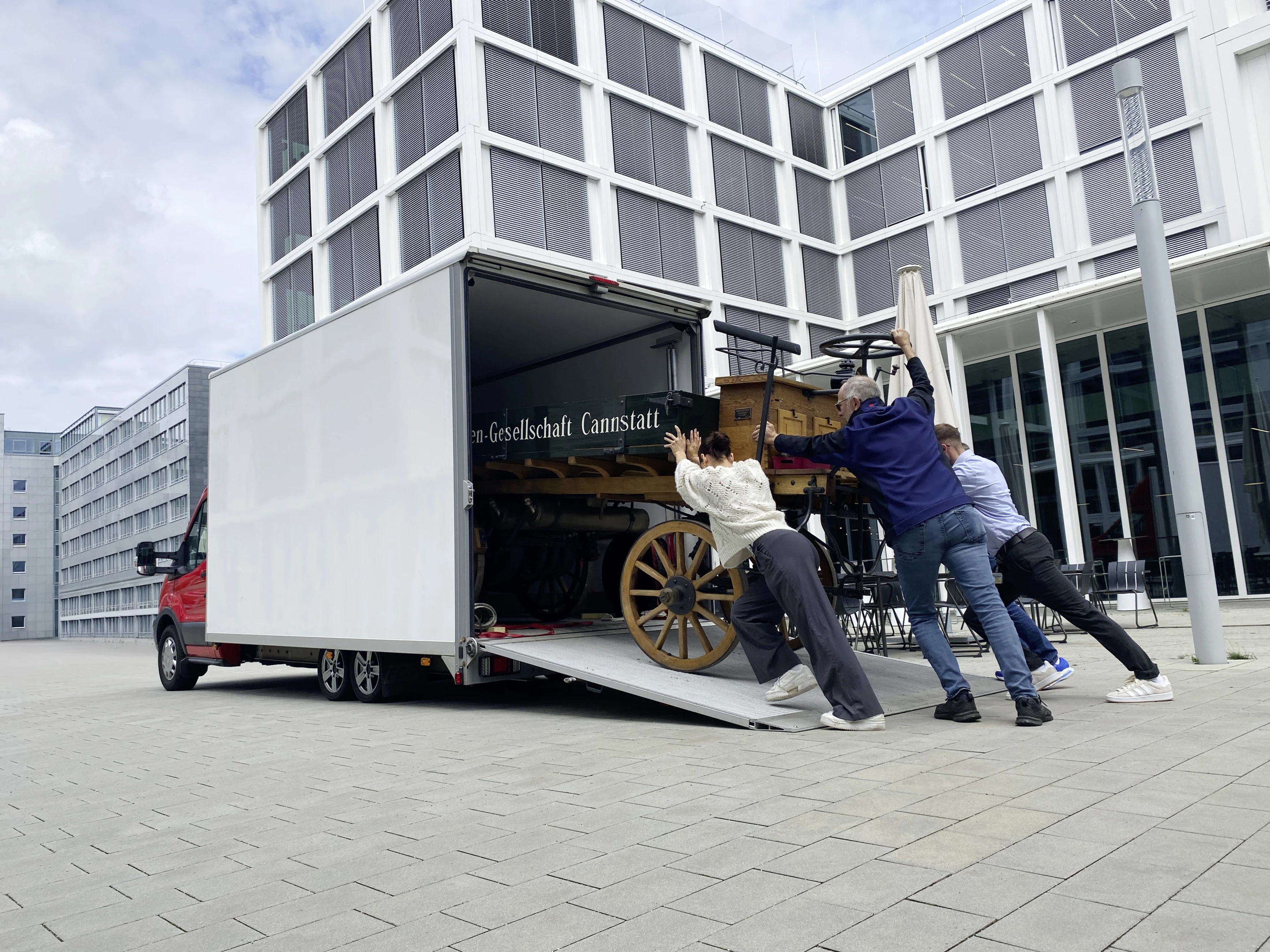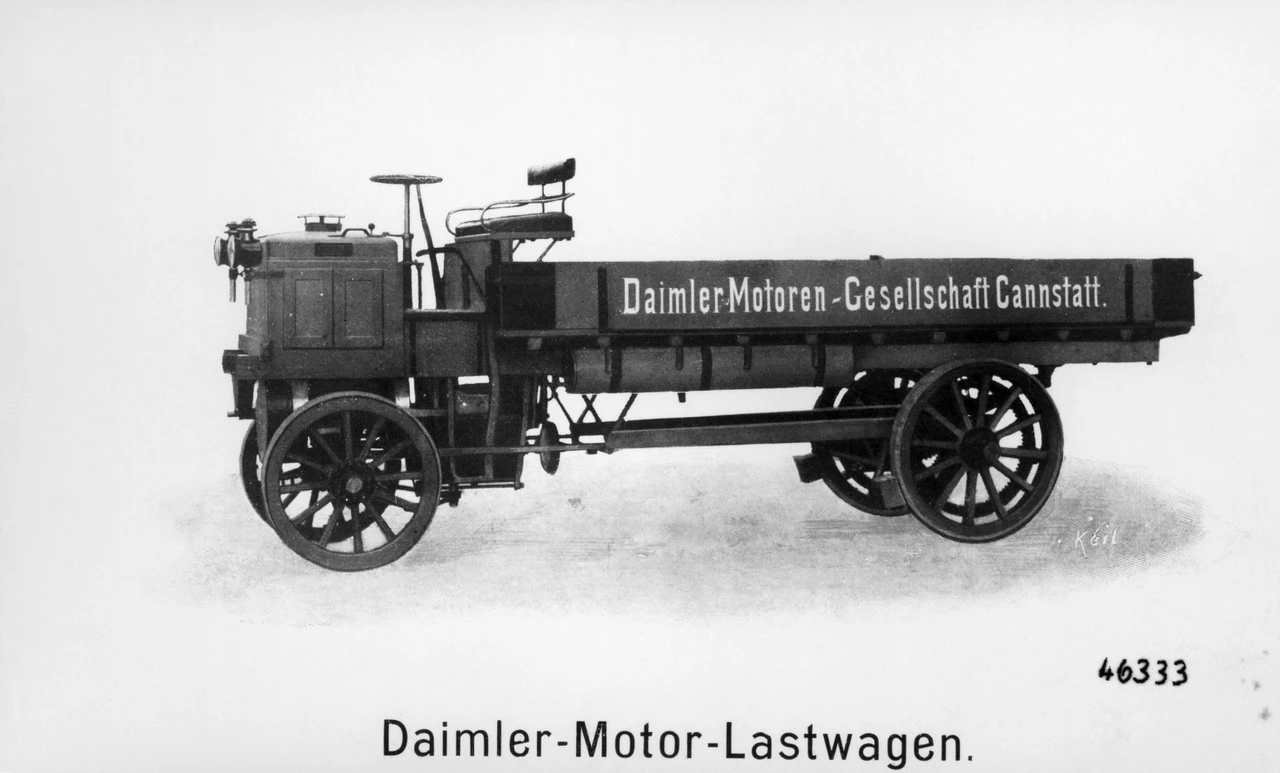An innovation is more easily appreciated when compared with what it replaced, and so it is for the first petrol truck, which is undergoing restoration this month in southwestern Germany.
Or rather, a replica of that vehicle is being restored, after having been withdrawn from display at Daimler Truck’s headquarters in Leinfelden-Echterdingen, south of Stuttgart.
The replica is spending the month of August at a trade school in nearby Nürtingen, where apprentices learn to restore and maintain classic cars. When it returns to the lobby at Daimler, it will be as a fully operational model.
"The handcrafted vehicle will be restored to working order under the guidance of experienced instructors and as part of the additional qualification in classic and modern classic cars by specially trained automotive apprentices," Daimler says. A demonstration run is scheduled for the Spitzkraut Classics, a classic vehicle event taking place in October.
Gottlieb Daimler and his team produced their truck prototype in 1896, about 11 years after Daimler built the first petroleum-powered vehicle, a motorcycle that relied for balance on outrigger wheels. The bike preceded Daimler’s first car because a car would have overtaxed the 264cc (16-cubic-inch) engine employed, which made half a horsepower (0.37 kW) at 600 rpm.
By the time Daimler turned its attention to producing a truck, its power plants had become more sophisticated. The truck prototype was powered by a 1060cc (65-cu-in) four-stroke with two vertical cylinders and Daimler’s patented hot-tube ignition. It generated a lusty 4 horsepower.
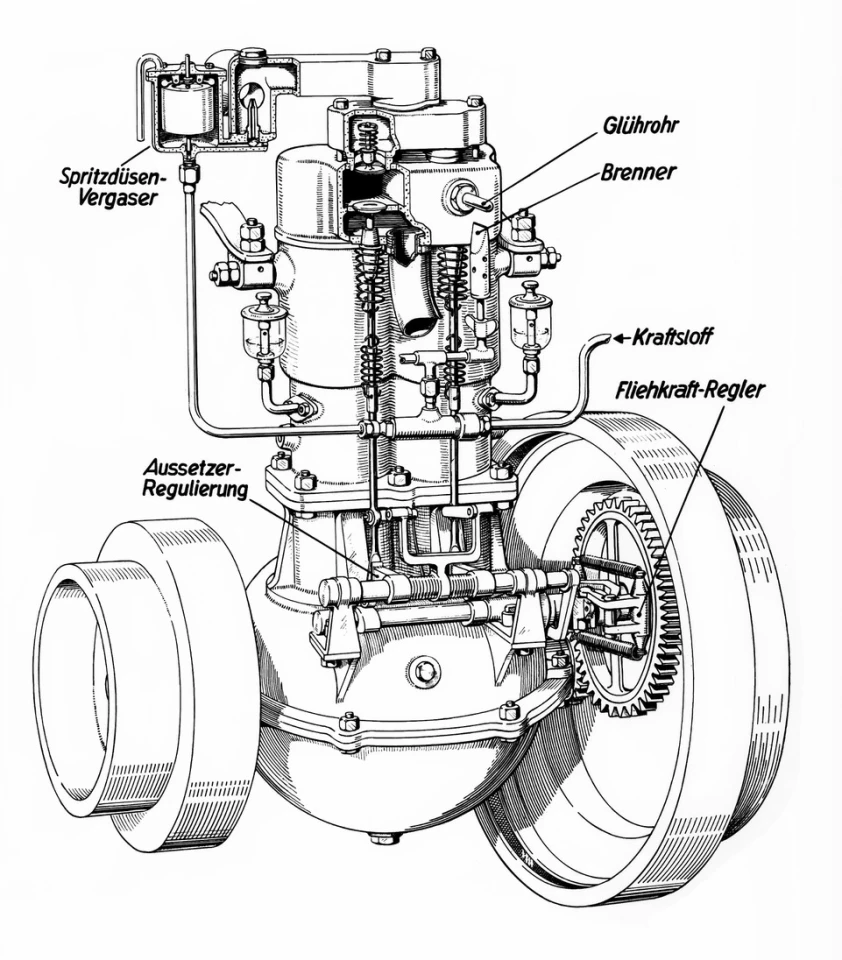
That output isn’t much by today’s lofty standards, but it would have allowed the truck to sustain the combined work of two or three horses while saving its owner the need to house, feed and harness the animals.
The gas engine was also more compact than the coal-fueled, steam-driven alternatives being developed at that time in England, and so Daimler could place it behind the rear axle of a chassis that owed much to the horse-drawn cart.
A multi-speed belt drive from the engine turned a transverse layshaft mounted under the tray. Pinion gears at each end of the layshaft engaged with the internal teeth of ring-gears that were firmly affixed to the truck’s steel-shod cart wheels. Rear suspension was provided by coil springs.
Like a cart driver guiding his horses, the truck driver sat ahead of the leaf-sprung front axle, steering it from a small horizontal wheel via a vertical shaft and a chain.
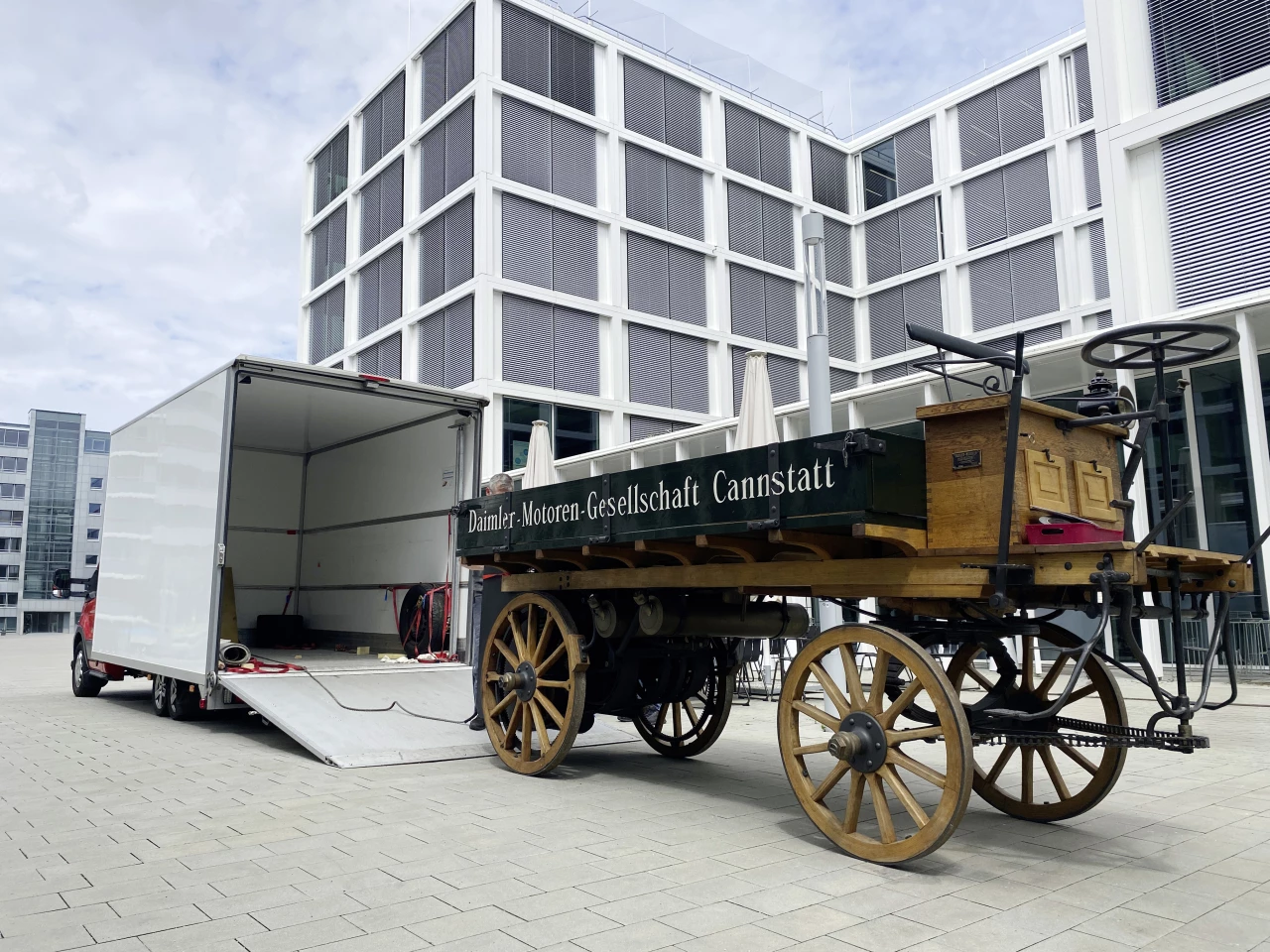
By 1898 the prototype had given way to a truck much more in keeping with modern designs, with a 2.2-liter (134-cu-in) engine placed over the front axle, in front of the driver, and driving the rear wheels through a shaft. A Bosch magnetic ignition had replaced Daimler’s hot-tube device.
“The restoration project combines automotive tradition, modern training and intergenerational exchange within the craft in a unique way,” Daimler says of its effort. “At the Philipp Matthäus Hahn School in Nürtingen, one of the leading schools for classic and modern classic cars in the Stuttgart region, authenticity is paramount.”
Daimler hasn’t said why the prototype being restored is a replica. Perhaps the original went the same way as history’s first motorbike, lost in a 1903 fire at Daimler’s first factory – along with the rest of Daimler’s museum and 93 production cars.
Source: Daimler
